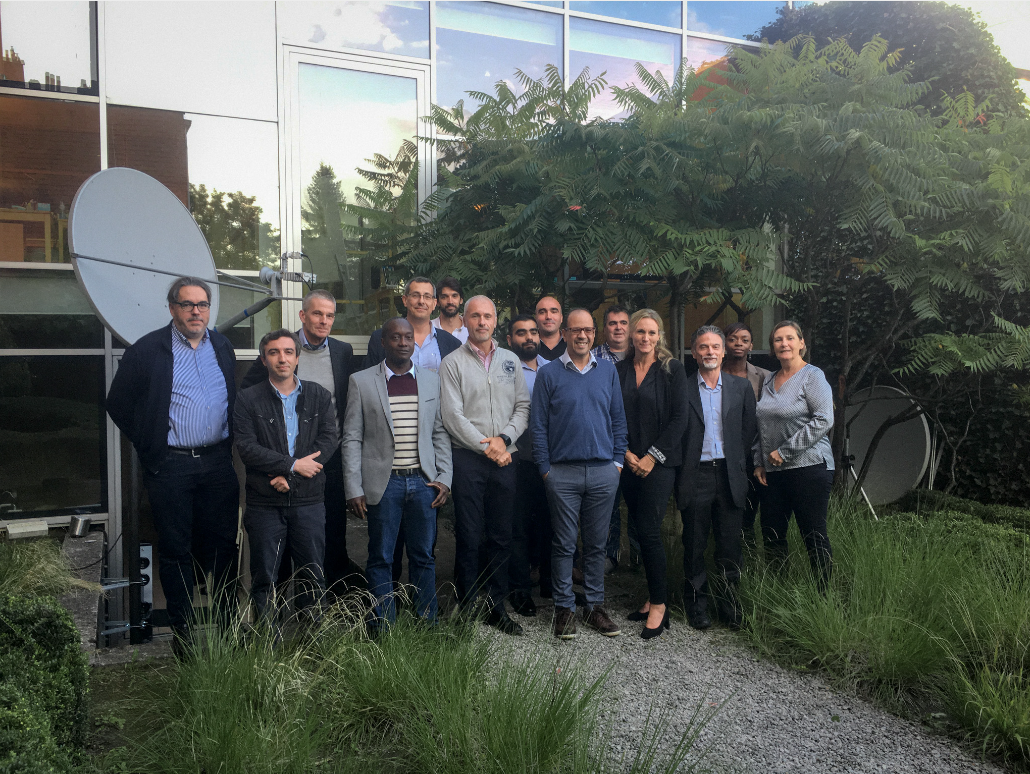
Belgian company SatADSL is broadening access to affordable Internet globally through its innovative Cloud-Service Delivery Platform (C-SDP), developed over the last two years through an ESA ARTES Competitiveness & Growth project. This Platform as a Service (PaaS) solution benefits satellite and ground station/teleport operators, who can more easily sell their capacity, adding value added services developed by SatADSL.
Founded in 2011, SatADSL bridges the gap between satellite operators who offer Internet access and those unable to access it (reliably or at all) through a first-of-its-kind cloud-based model. Originally serving the Sub-Saharan African region, SatADSL now serves communities across the Americas, Europe, Africa and Asia.
Satellite operators looking to sell their capacity but lacking the means to identify alternative markets – and the physical infrastructure to supply them – face a challenge. SatADSL enables them to sell on that capacity by acting as an aggregator, brokering and supplying capacity in any band (C, Ka and Ku) to those who need it. Through its model, operators benefit from range of added value services such as an online payment system and voucher options on satellite capacity.
Expanding services globally
Initially, SatADSL focused on providing services to Africa, where vast swathes of the population lack terrestrial services and rely on satellite-based options.

For four years, SatADSL has also targeted satellite and teleport operators and proposed access to its platform in the form of a PaaS in order to offer them all the embedded advantages of it. Now, as a result of the ARTES project, it is able to provide brokered satellite bandwith globally, having added additional points of presence (PoPs) in multiple continents to connect its cloud C-SDP platform too. For users, this avoids any additional latency associated with fiber on top of the unavoidable latency of geostationary satellite communications.
Technical developments during the two-year project, which finished in July 2020, have also enabled SatADSL to offer its services to teleports as well as satellite operators, unlocking new revenue opportunities for operators without them having to make significant technology investments. The PaaS solution is provided on a risk-sharing model and enables operators to sell on their capacity anonymously.
At the other end of the value chain, the deployment of two PoPs (one in Singapore and one in Orlando, Florida) not only broadens the geographical spread of SatADSL’s service, but should also make it easier for local Service Providers to sell on capacity af-ggregated on the C-SDP to their end-users fleet. The newly conceived VNOFlex service offering allows service providers to subscribe toa dedicated VNO and allocate it dynamically across their customers as required. This bandwidth flexibility is also important for many end-users whose demand is not static, either across the year (such as schools) or even week-to-week.
Through SatADSL’s platform, Service Providers can also offer their own branded vouchers, allowing customers to buy access as and when they need and can afford it, and allocating bandwidth accordingly.
Benefitting from ESA technical and business support
 Both the funding and support provided through the ARTES project were important for the development of the technology required for the new cloud-based service and to widen SatADSL’s offering at both ends of the Internet bandwidth supply chain.
Both the funding and support provided through the ARTES project were important for the development of the technology required for the new cloud-based service and to widen SatADSL’s offering at both ends of the Internet bandwidth supply chain.
“Working with ESA is really good for us. This isn’t the first time we’ve worked with them and the technical feedback is always beneficial,” explained Caroline De Vos, Co-Founder and COO of SatADSL. “What we’re doing is very niche – there is nobody else doing it and we’re in the process of gaining worldwide patents. Ultimately, we are a company of engineers, so the support they give us with the project management side, such as reporting and planning, is extremely valuable.”
ESA’s ARTES programme enables European companies to explore innovative concepts to produce leading-edge satcom products and services. The Competitiveness & Growth element is dedicated to the development, qualification and demonstration of products, systems and/or applications.
“During the PaaS project, ESA has supported SatADSL to trial an innovative service idea. PaaS allows teleport operators to maximise the utilisation of their assets and also offers satellite Internet access to millions of potential users. The trials have shown a large interest for this new model,” said Olivier Becu, Application Project Manager, Downstream Business Applications, Telespazio Vega for ESA.
ABOUT ESA SPACE SOLUTIONS
ESA Space Solutions is the go-to-place for great business ideas involving space in all areas of society and economy. Our mission is to support entrepreneurs in Europe in the development of business using satellite applications and space technology to improve everyday life. Our programme is designed to provide multiple entry points such as ESA Business Incubation Centres (ESA BICs), ESA Technology Broker Network, and ESA Business Applications programme. Funding typically ranges from 50KEuro to 2MEuro and supports everything from space technology transfer, early stage incubation programs, feasibility studies to large-scale demonstration projects.


